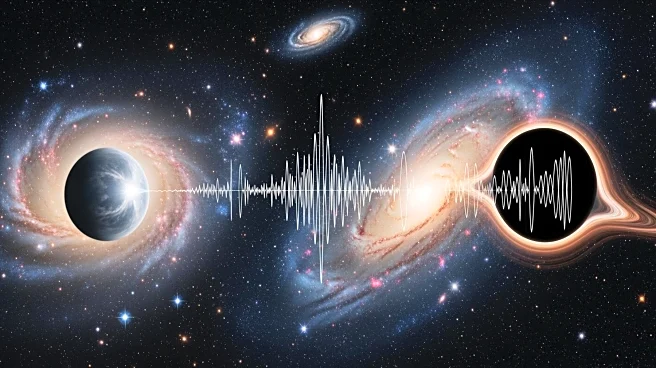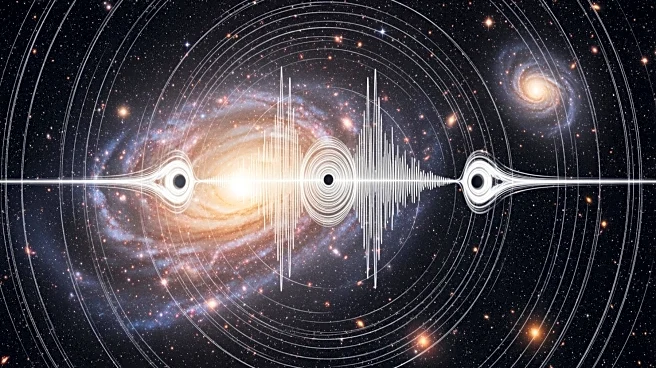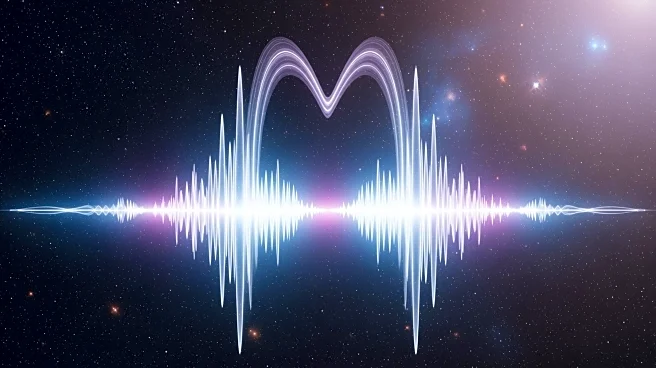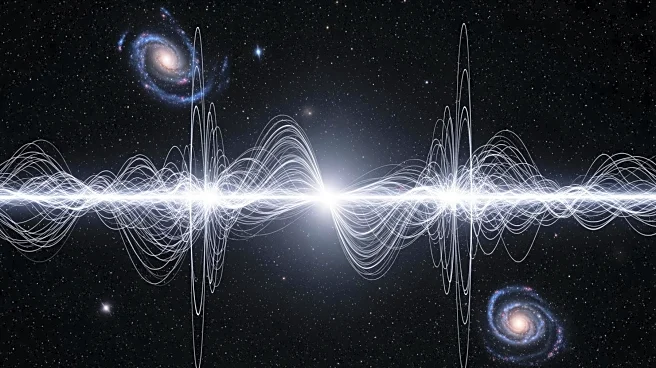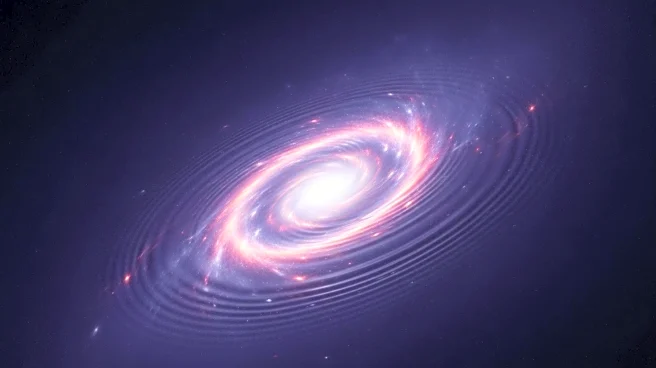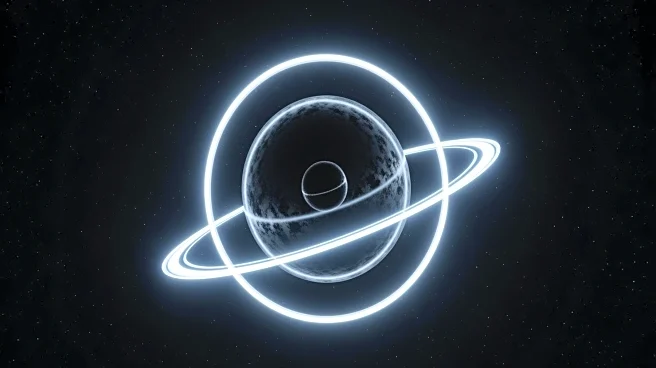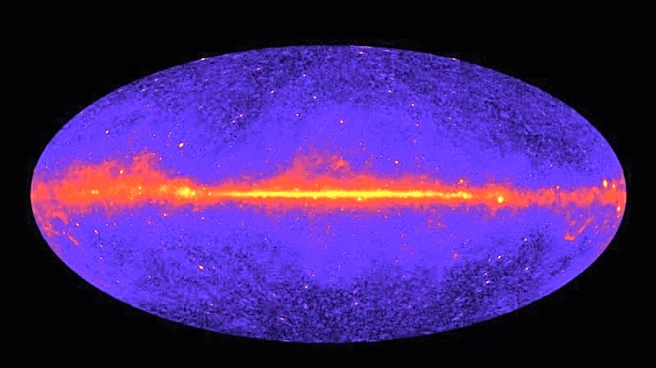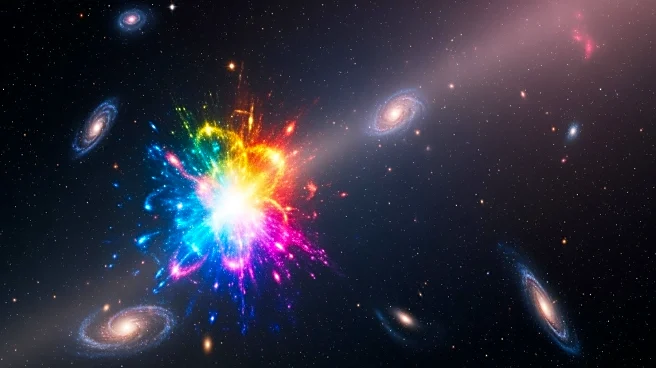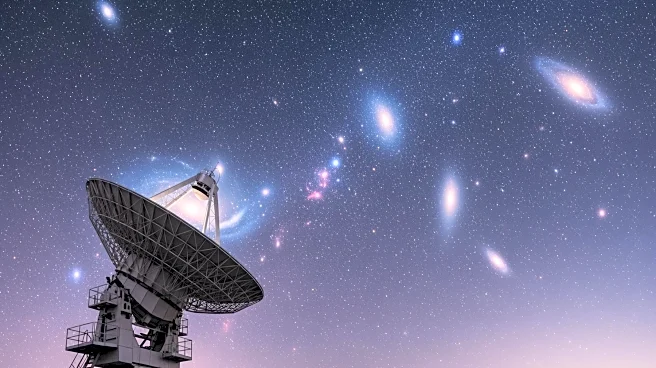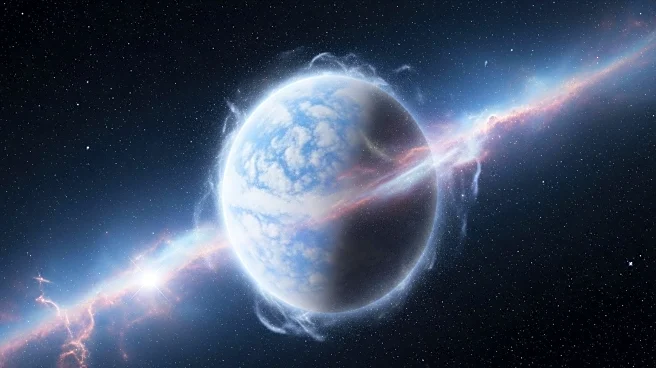What's Happening?
Scientists have proposed a method to distinguish gravitational waves from the Big Bang and those from supermassive black hole mergers by analyzing their unique 'rhythms.' Pulsars, rapidly spinning dead
stars, serve as precise cosmic clocks that can detect these waves. During the Big Bang, quantum fluctuations generated primordial gravitational waves, which still permeate the cosmos. Added to these are waves from black hole mergers, forming a faint gravitational-wave background. Pulsars emit regular radio wave pulses, and any deviation in their timing indicates a gravitational wave passing between Earth and the pulsar.
Why It's Important?
Separating gravitational waves from different sources could provide insights into the number and masses of supermassive black hole binaries in the Universe. More importantly, isolating signals from primordial waves could enhance understanding of cosmic inflation, the rapid expansion that shaped the Universe's early moments. This research could deepen knowledge of the Universe's birth and evolution, offering clues about fundamental physics and cosmology.
What's Next?
Physicists Hideki Asada and Shun Yamamoto have proposed a method to differentiate waves based on interference patterns. Detecting these patterns requires more sensitive instruments than currently available. Future advancements in technology and observational techniques will be crucial for capturing these subtle signals and expanding our understanding of gravitational waves and their sources.
Beyond the Headlines
The study of gravitational waves using pulsars not only advances astrophysics but also contributes to the broader field of cosmology. By refining methods to detect and analyze these waves, scientists can explore the fundamental forces and events that shaped the Universe. This research underscores the interconnectedness of different scientific disciplines in unraveling the mysteries of the cosmos.
